Many Sources; Many Solutions & What You Can Do
Carl Pope, longtime environmentalist and former executive director and chairman of the Sierra Club, came to Palo Alto on November 2nd to talk to Acterra about the new book, Climate of Hope. The 264-page volume, co-written with financier and former New York Mayor Michael Bloomberg, presents climate change in a different way from what you often hear in the media, which tend to dwell on the most dramatic results of change, such as hurricanes and floods.

The main point of the book, and of Pope’s talk, is that there are many causes of global warming, but are also many solutions.
According to Pope, global warming, like a fever, is a symptom—not the disease itself.
“If you go to the doctor and he or she says, ‘you have a fever,’ that’s not enough,” said Pope. “You want to know what the illness is, so you can take care of it.”
Rising temperatures and climate change come from an increase in greenhouse gases, including CO2, and there are ways to mitigate these. The “hope” part is that some projects are already underway, and they are not necessarily being done by national governments.
Pope and Bloomberg don’t believe you must give up prosperity to achieve big results. You just need to frame the situation as a win/win by giving companies and governments tools to become richer, healthier and safer by doing things that also help cool down the planet.
Many Causes of Global Warming
Pope stood before a huge screen and pointed to a pie chart. On it, the pie was cut ino several different colored slices, which represented “Sources of Major Pollutants”-worldwide, as reported by the US EPA. He pointed to the orange one, the largest slice, which represented “Fossil Fuels”—31 percent of the circle.
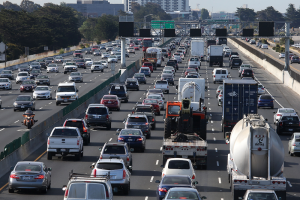
“Some people think the main cause of global warming is fossil fuels,” said Pope. “But it’s actually less than a third.”
He called out the other sections, including “Methane” (27 percent), “Forestry” (15 percent), “Black Carbon” (17 percent), “Nitrous Oxide” (5 percent), and “Halocarbons” (5 percent). Then, he described the issues with each segment and presented some possible solutions.
For example, the 15 percent for Forestry relates to loss of tropical rainforest, with its ability to absorb CO2. The problem is, about half of the timber cutting business in the tropics is illegal.
“Governments need to work to enforce a ban on contraband logging,” Pope said.
The Methane Issue
Methane (27 percent) is a heat-storing gas that is 25 times more potent than CO2 over a hundred-year period. It’s generated from several sources, including herds of cows and rice paddies, but Pope talked about how the oil and gas industry is responsible for a significant portion of it, too.
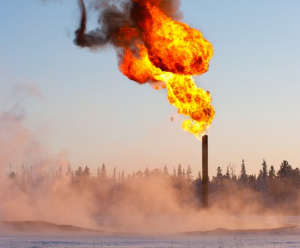
“An oil company can drill for oil and then burn off (flare) the natural gas without having to pay,” Pope said. “We need to ‘charge for what you get’ to lower the numbers on this kind of methane release. There are no consequences of these environmentally destructive actions now.”
Luckily, methane remains in the atmosphere for a much shorter time than CO2—about 16 years—so, if we can stop releasing it, the problem will diminish. A mass switch to vegetarianism would have an impact as well, but that kind of sacrifice was not the subject of Pope’s talk—or the book.
Black Carbon & Nitrous Oxide
Black carbon (17 percent) is a byproduct of cooking over dirty fuels, such as kerosene. Sadly, many people, mostly women, use these fuels out of necessity all around the world to cook for their families. According to Pope, about 10 percent of these women will die from exposure to these toxic chemicals, and the entire planet is absorbing the black carbon into the atmosphere.

“Ironically, methane, which is natural gas, could be used as a clean cooking fuel,” said Pope.
Nitrous oxide (5 percent) is found in fertilizer, which is routinely overused by farmers. Why? Per Pope, farmers use it to grow lots of corn, which needs lots of fertilizer. The corn is then processed into corn syrup – an $80 billion industry.
“It would be better to grow something we want that uses no fertilizer,” said Pope.
There are many ways to improve farming techniques to keep more carbon in the soil. These are discussed at length in the book.
Halocarbon Danger & Hope
Halocarbons (5 percent) are very dangerous refrigerants used in air conditioning systems. They are successors to chlorofluorocarbons (CFCs), which were banned years ago. This helped close the hole in the ozone layer. Per Pope, implementing the Kigali Accord, which was adopted by 170 nations in Kigali, Rwanda, on October 16, 2016, to phase out halocarbons, would go a long way.
“It’s the first climate pollutant we can get rid of,” said Pope.
Burning coal is a major contributor to CO2 in the atmosphere. Much has already been done to reduce coal use. The price for wind and solar has been dropping quickly, and natural gas is also replacing coal in some plants.
“Coal is going away not because of a government ‘war on coal,’ but because it is no longer financially competitive,” said Pope.
Pope told two anecdotes to show this change.
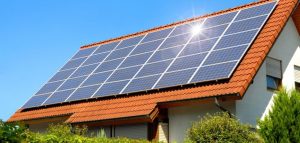
“In eastern Kentucky, the Museum of Coal Mining needed a new system to heat their building. They looked at the options and ended up installing solar panels, which saves them $10,000 a year!”
“The CEO of the CSX Railroad said recently that the company will no longer be replacing its coal hauling cars. This was a big business for them, but he sees that coal is going away, not next year, but he’s not sure about it in 20 years.”
Regarding wind energy, Pope said it was the cheapest electricity ever, and would remain that way regardless of what the leadership in Washington tries to do to preserve old, dirty industries. There are many opportunities for businesses, such as Anheuser-Busch, to adopt renewable energy sources.
“Anheuser-Busch stated they would get 100 percent of their electricity from renewables,” Pope said. “This isn’t because customers care, or it makes the beer taste better—it’s just good business.”

New Energy=New Employees
Another reason to move to renewables is that it allows you to hire the best new employees.
“Young college graduates are asking employers about their companies’ environmental credentials during job interviews,” said Pope.
Regarding the growth in electric vehicles, Pope thinks we’ll be able to clean up the fleet in 10 to 15 years. However, his point is that although this is an important activity in the overall scheme, there are many other causes of climate change, and we can and should address them all.
What We Need to Do to Succeed
Pope recommended three major things we need to do:
- Continue innovating quickly.
- Create insurance to help people who lose their jobs when technology changes.
- Make businesspeople work hard for a profit.
We may think that change is gradual, but sometimes it seems to happen overnight.

“In the 1916 Macy’s Day Parade, there were eight horses for every car, said Pope. “In the 1920 parade, there was one horse.”
And, he further related, in 1920, there were 118,000 well-paid professional harness makers. In 1928—zero. The horses were gone. The workers moved on to other jobs—it was the 1920s and there was a strong economy.
The 1930’s were a different story, however. After the 1929 Stock Market Crash, a lot of jobs disappeared. Per Pope, it was a period when innovation froze. What helped move things along were programs like Social Security. What also helped was making credit available, so, for example, farmers could electrify.
“In the late 1930’s, 95 percent of farms gained power because they could get affordable loans,” Pope said, as an example.
Innovation for Today
Today, Pope proposes that we use similar programs to help people who are displaced by technology.
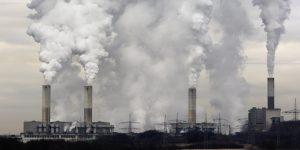
“We need the people who make the money from innovation to share with the folks who lose in progress,” he says. “That keeps innovation alive, and helps people adjust and move forward in the inevitably changed world.”
If we make it too easy for companies to earn big profits without big effort, they lose motivation to do the right thing.
“We need to pay attention to who we pay off,” says Pope. “Or they’ll just steal.”
Room for Some Cautious Optimism
The bottom line is that you won’t convince people to do the right thing for the climate by making it sound like a sacrifice or by scaring them. There are immediate payoffs and advantages to making changes now.
However, despite the many good things happening to mitigate some climate change, Pope warns that we need to move fast. We can’t set a goal of zero sea level rise or weather disruption, he added. No matter what we do, some change is coming—in fact, it’s already here.
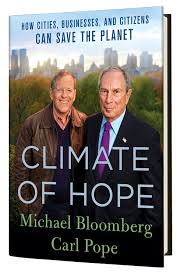
“We need to worry about serious unraveling of the system,” Pope said.
But he thinks the likely scenarios are a bit less dire, even with the current politics in Washington. For one thing, the two countries with the largest populations—China and India—are working hard to make big changes now.
“Those two nations are not major petroleum producers, and they have lots of wind and sun, so they have a great incentive to invest in sustainable energy,” Pope said. “At a symposium in New Delhi last August, Union Power Minister Piyush Goyal stated that he wanted to move to all electric vehicles by 2030, and it’s actually starting to happen. Things are moving very fast.”
Pope is currently the principal adviser at Inside Straight Strategies, which focuses on the links between sustainability and economic development. He also serves as Bloomberg’s senior climate advisor. That means he has ideas that are down-to-earth and make good business sense.
There’s only so much Carl Pope could cover in a fascinating hour, but to get much more insight into what’s happening to mitigate climate change, read Climate of Hope and keep a positive attitude—there’s a lot happening now, and much more to come. And you can be part of it.
Related Stories You Might Enjoy:
News: State of the World: 2011
News: U.S. Climate Action Plan Roadmap
News: DOT Reports Climate Action

3 thoughts on “Event: Carl Pope Talks Climate Change Hope”